The village of Corby derives its name from Kori, the leader of Danish invaders who settled in a clearing in Rockingham Forest. It became known as ‘Kori’s by’ – ‘Kori’s settlement’. Corby grew in significance when Saxon King Edgar established the administrative area known as the Corby Hundred. The coat of arms granted to Corby in 1959 is divided unto four quarters, each with a Saxon Crown, indicating the new town’s ancient origins.
Text about The Saxon Crown.
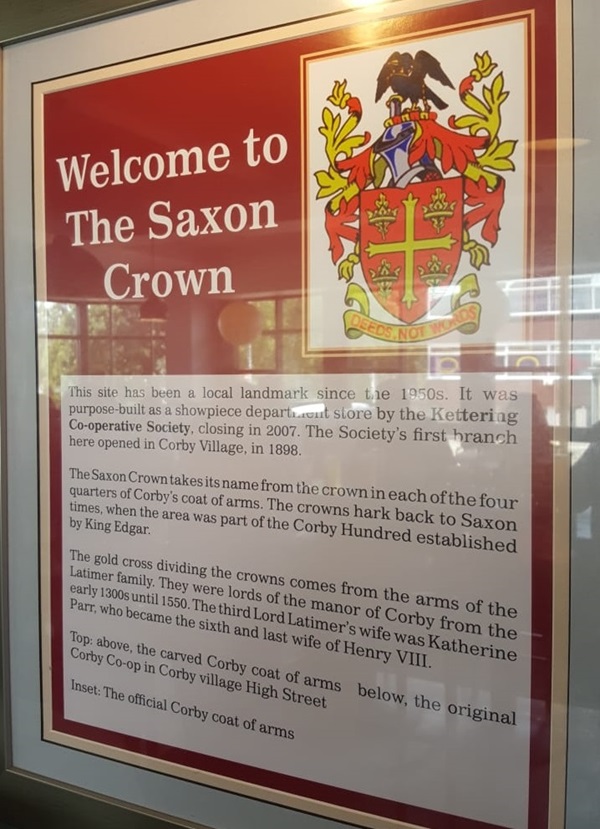
The text reads: This site has been a local landmark since the 1950s. It was purpose-built as a showpiece department store by the Kettering Co-operative Society, closing in 2007. The Society’s first branch here opened in Corby Village, in 1898.
The Saxon Crown takes its name from the crown in each of the four quarters of Corby’s coat of arms. The crowns hark back to Saxon times, when the area was part of the Corby Hundred established by King Edgar.
The gold cross dividing the crowns comes from the arms of the Latimer family. They were lords of the manor of Corby from the early 1300s until 1550. The third Lord Latimer’s wife was Katherine Parr, who became the sixth and last wife of Henry VIII.
Top: above, the carved Corby coat of arms Below: The original Corby Co-op in Corby village High Street Inset: The official Corby coat of arms.
Photographs and text about Colin Dexter – creator of Inspector Morse.
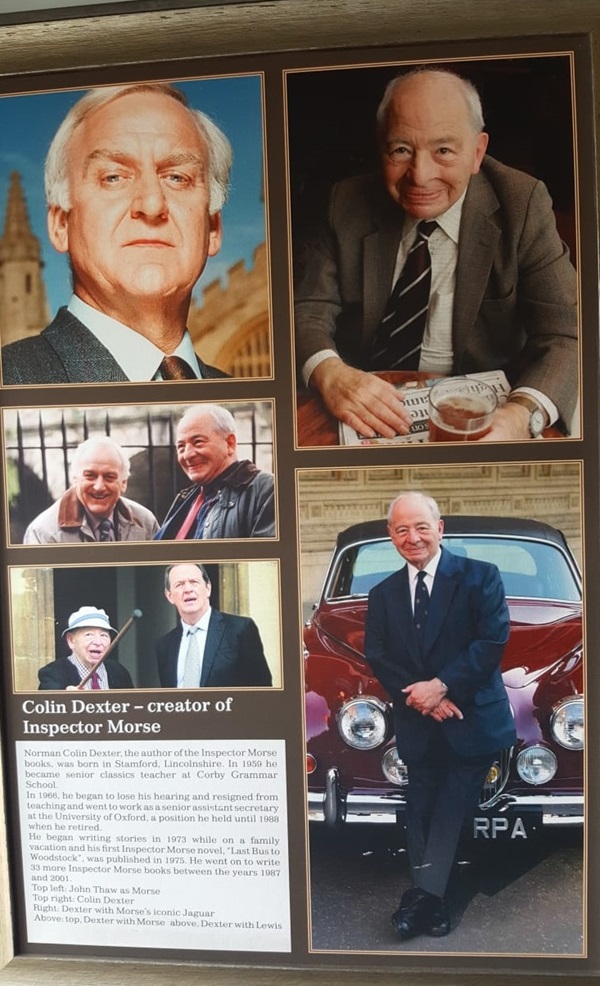
The text reads: Norman Colin Dexter, the author or the Inspector Morse books, was born in Stamford, Lincolnshire. In 1959 he became senior classics teacher at Corby Grammar School.
In 1966, he began to lose his hearing and resigned from teaching and went to work as a senior assistant secretary at the University of Oxford. A position he held until 1988 when he retired.
He began writing stories in 1973 while on a family vacation and his first Inspector Morse novel, Last Bus to Woodstock, was published in 1975. He went on to write 33 more Inspector Morse books between the years 1987 and 2001.
Top left: John Thaw as Morse
Top right: Colin Dexter
Right: Dexter with Morse’s iconic Jaguar
Above: top, Dexter with Morse
Above: Dexter with Lewis.
Photographs and text about New Town.
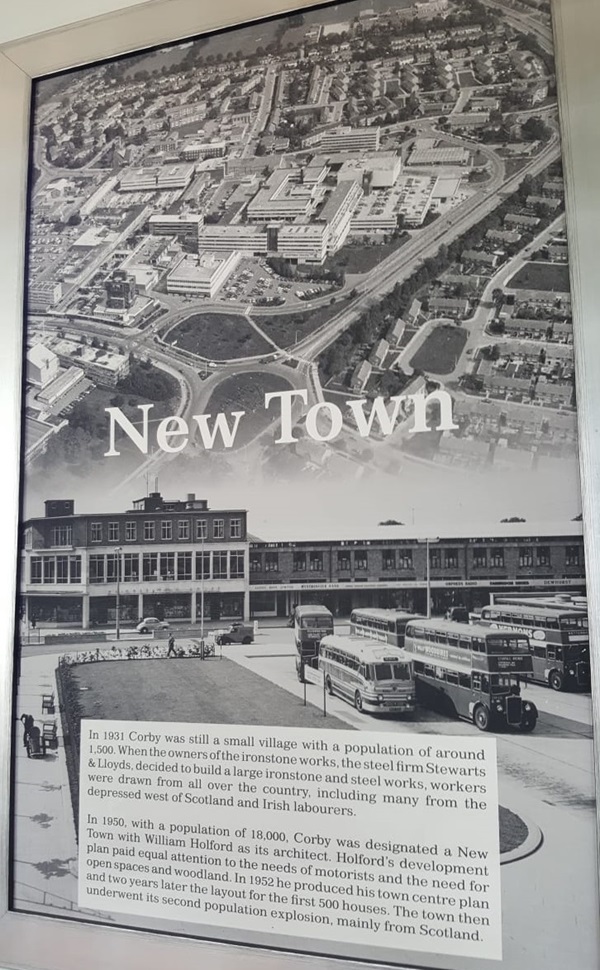
The text reads: In 1931 Corby was still a small village with a population of around 1,500. When the owners of the ironstone works, the steel firm Stewarts & Lloyds, decided to build a large ironstone and steel works, workers were drawn from all over the country, including many from the depressed west of Scotland and Irish labourers.
In 1950, with a population of 18,000, Corby was designated a New Town with William Holford as its architect. Holford’s development plan paid equal attention to the needs of motorists and the need for open spaces and woodland. In 1952 he produced his town centre plan and two years later the layout for the first 500 houses. The town then underwent its second population explosion, mainly from Scotland.
Prints and text about Operation Pluto.
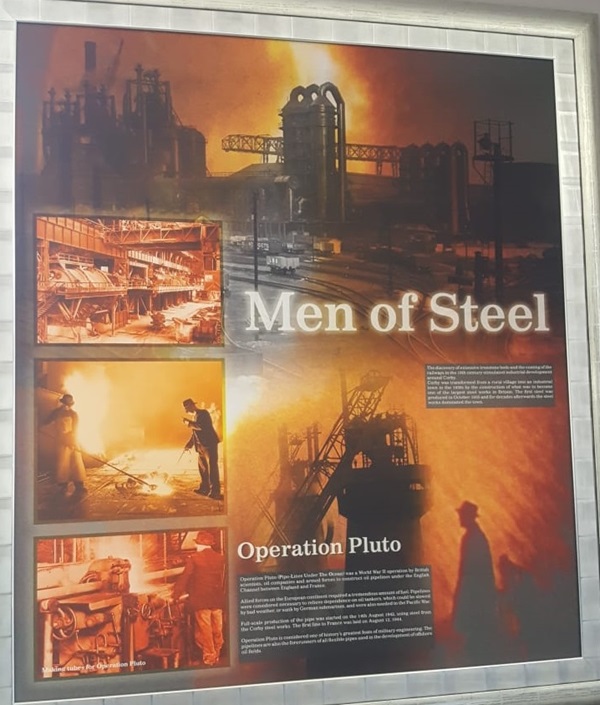
The text reads: Operation Pluto (Pipe-Lines Under The Ocean) was a World War II operation by British scientists, oil companies and armed forces to construct oil pipelines under the English Channel between England and France.
Allied forces on the European continent required a tremendous amount of fuel. Pipelines were considered necessary to relieve dependence on oil tankers, which could be slowed by bad weather, or sunk by German submarines, and were also needed in the Pacific War.
Full-scale production of the pipe was started on the 14 August 1942, using steel from the Corby steel works. The first line to France was laid on August 12, 1944.
Operation Pluto is considered one of the history’s greatest feats of military engineering. The pipelines are also the forerunners of all flexible pipes used in the development of offshore oil fields.
Prints and text about Mary Queen of Scots.
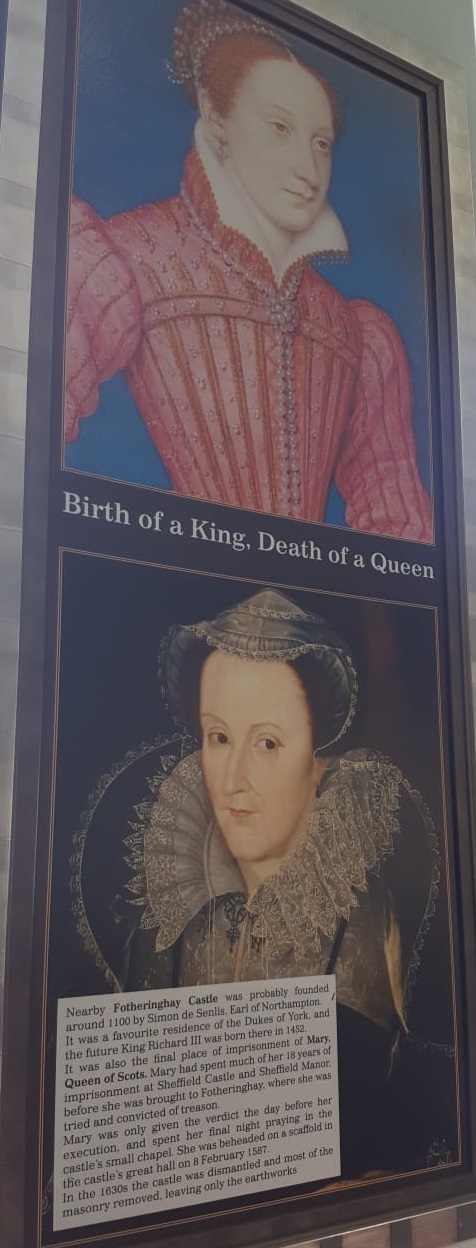
The text reads: Nearby Fotheringhay Castle was probably founded around 110 by Simon de Senlis, Earl of Northampton. It was a favourite residence of the Dukes of York, and the future King Richard III was born there in 1452.
It was also the final place of imprisonment of Mary, Queen of Scots. Mary had spent much of her 18 years of imprisonment at Sheffield Castle and Sheffield Manor, before she was brought to Fotheringhay, where she was tried and convicted of treason.
Mary was only given the verdict the day before her execution, and spent her final night praying in the castle’s small chapel. She was beheaded on a scaffold in the castle’s great hall on 8 February 1587.
In the 1630s the castle was dismantled and most of the masonry removed, leaving only the earthworks.
A photograph and text about the early days of Corby.
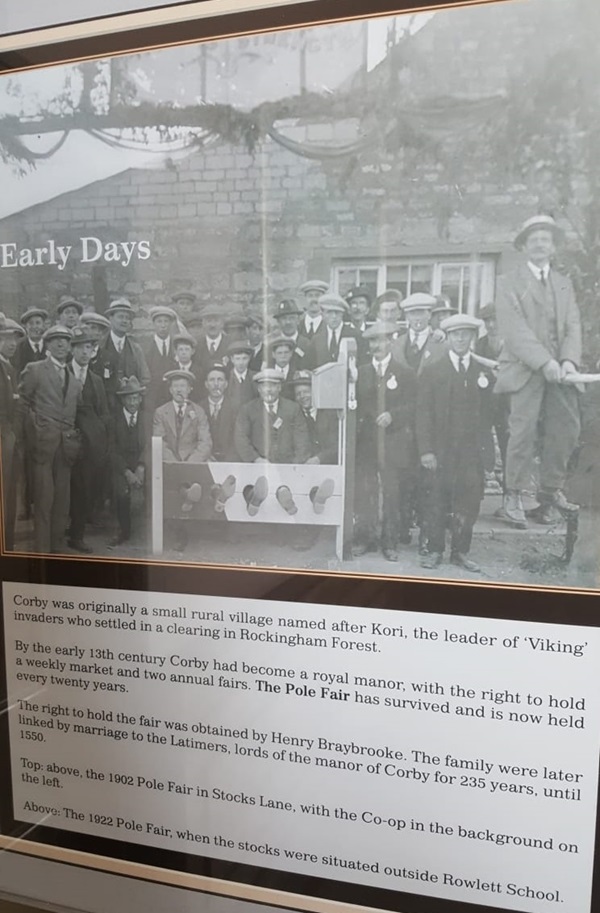
The text reads: Corby was originally a small rural village named after Kori, the leader of Viking invaders who settled in a clearing in Rockingham Forest.
By the early 13th century Corby has become a royal manor, with the right to hold a weekly market and two annual fairs. The Pole Fair has survived and is now held every twenty years.
The right to hold the fair was obtained by Henry Braybrooke. The family were later linked by marriage to the Latimers, lords of the manor of Corby for 235 years, until 1550.
Top: above, the 1902 Pole Fair in Stocks Lane, with the Co-op in the background on the left
Above: The 1922 Pole Fair, when the stocks were situated outside Rowlett School.
A sculpture entitled P.L.U.T.O, by Wayne Summerfield.
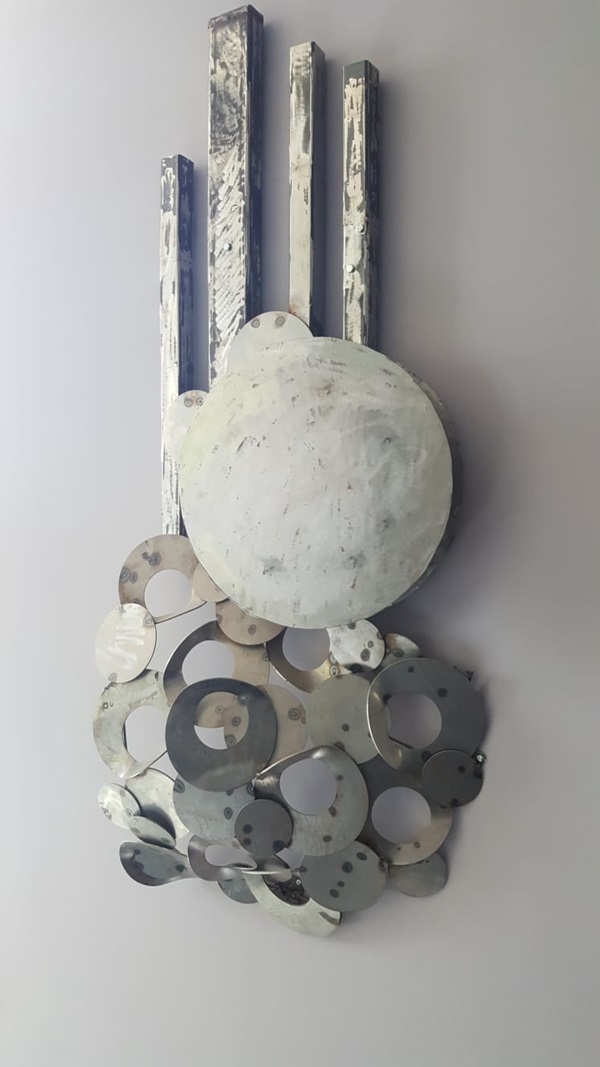
Wayne believes every piece of metal wants to be something else. Every metal object looks beyond what it started life as. Everything is waiting to be a piece of art. “I take on art as I experience life, to be creative, to use unusual materials and turn them into art. In metal sculptures anything is possible.”
External photograph of the building – main entrance.
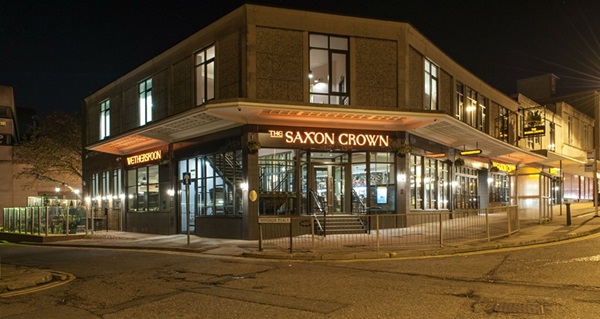
If you have information on the history of this pub, then we’d like you to share it with us. Please e-mail all information to: pubhistories@jdwetherspoon.co.uk